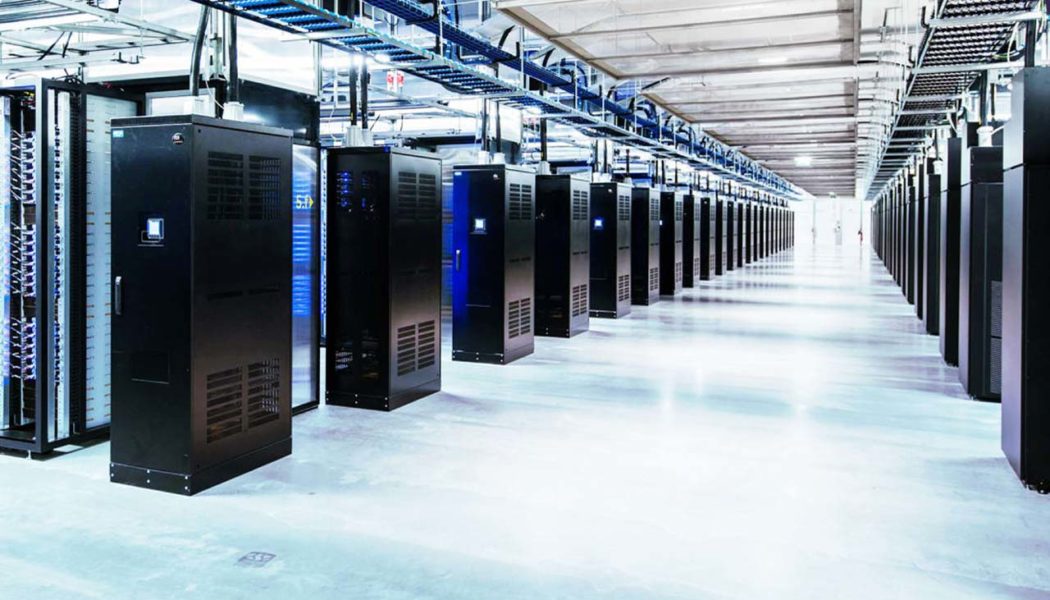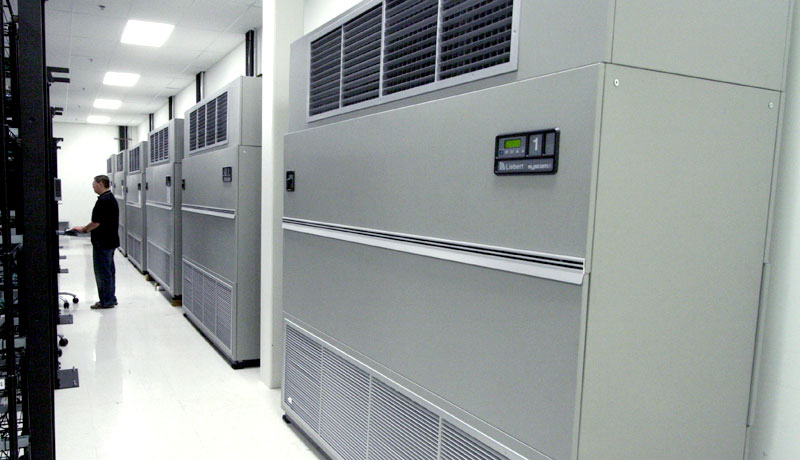Refrigeration is a critical part of a data center infrastructure, and fortunately, there are some approaches to maintaining the temperatures needed to keep your installation’s electronic equipment running. Although an in-depth discussion of all the design concepts associated with the refrigeration infrastructure could be a large volume, a brief description of the options can help you determine which route is best for your data center infrastructure.
Data center infrastructure

Computer equipment consumes electricity to operate and leaves heat as “waste.” Because the data center is a closed installation, this heat – if it is not given an outlet – can increase to the point of damaging or destroying the servers.
The problem is that moving something (even heat) usually requires energy as well as infrastructure, which means that it costs money in both capital and operating expenses.
As companies try to control the energy needs of their facilities, refrigeration is one of the main objectives; therefore, it is tending towards the so-called free cooling.
Although free cooling is not as free as the name might indicate, it tends to require less energy and infrastructure than more traditional cooling methods.
Eliminating the heat

So, what are the options to eliminate waste heat? The goal of cooling is to move the heat from the indoor environment (the data center) to the outside, thus maintaining a temperature conducive to proper operation and, preferably, a long service life of the servers and other equipment. The two essential options are to move the heat using air or a liquid (typically water or some form of coolant).
Air cooling offers obvious benefits: air is everywhere, it does not damage IT equipment, and it is relatively easy to move. Also, a practical feature of hot air is that it rises about the cooler air, providing some degree of separation between them; Most air cooling equipment uses this property in its operation.
However, because this separation is not absolute, inefficiencies arise, particularly when warm air and cold air mix.
Liquid cooling can provide better and more specific cooling, increasing both efficiency and efficiency.
Cold water, for example, can be delivered directly to a server rack, focusing the cooling effort right where it is needed (in the rack or the cabinet, instead of trying to maintain a certain temperature throughout the room, for example). Example).
But liquid-based systems also pose some difficulties: leaks are a threat to IT equipment (especially if the liquid is water), the transport of refrigerated liquid can cause condensation, and more infrastructure is required since the liquid must be contained (unlike air). Because of these concerns, liquid cooling is more expensive than air cooling. But for certain high-density implementations, liquid cooling may be the only option.
Air cooling equipment

Air cooling involves the use of air conditioners for server rooms to convert hot air into cold air by removing heat to the outside.
This equipment can be used in basic configurations to cool the entire room, just a row or just a rack. The air conditioning of the entire room places this equipment in such a way that a certain temperature is maintained uniformly throughout the room. Due to the inefficiency of mixing hot and cold air, the refrigeration designs throughout the room have been refined to isolate hot air from cold air.
A very used approach is the raised floor: the EA (Air Equipment) provide cold air under the room (taking advantage of the greater “weight” of cold air), and this is dragged up by fans. The hot air that supports the residual heat of the servers then rises, and the EA picks it up from above in the room, cool it and return it under the floor to repeat the cycle. The heat is transferred outside the installation.
To provide even greater efficiency, some EAs implement hot aisles and cold aisles to insulate hot air from cold air further. All the air inlets of the server are facing the cold aisle, and the exhaust is directed to a hot aisle. This type of design attempts to minimize the mixing of hot air and cold air by blocking unused server slots, plugging cable holes, etc. More sophisticated designs can also include walls between the racks and the roof to insulate hot and cold air further.
The EAs can also be located so that the cooling is centered in particular corridors (instead of in the whole room), or even in certain frames. Such designs seek to provide greater warm air / cold air insulation and greater cooling of the targets, thus increasing efficiency. These designs also tend to imply greater foresight and, in general, cost more than whole-room approaches.
Liquid cooling designs
Liquid cooling poses greater technical and budgetary challenges than air cooling, but its efficiency makes it a necessity for high-density applications.
Liquid refrigeration equipment includes chillers that remove heat from the outside environment, often with the help of a cooling tower, to provide cold water or refrigerant. This liquid is then transported to the data center, either directly to the racks or an air handling unit in the computer room. As mentioned above, liquid cooling requires more infrastructure, in particular, the lines that carry the liquid to the installation and possibly directly to the racks.

“Cooling” Free
Free cooling, sometimes called economization in the air zone or the water zone involves cooling that limits the operating costs of refrigerators and compressors associated with traditional cooling methods. Free cooling does not eliminate this infrastructure, but it does minimize its use.
The economy of air, at its most basic level, can involve what is equivalent to “opening the windows” of the data center, using fresh air from outside to cool the equipment. However, this approach poses some difficulties, such as the presence of contaminants and variations in humidity. The most sophisticated designs use heat wheels or fixed-plate heat exchangers to transfer heat to the outside without the risks of contamination associated with the direct intake of outside air. In the same way, economization on the waterside uses outside air, usually combined with evaporation effects, to cool the liquid without the need for chillers.
The ability to use free cooling has been expanded. Operating a facility at a higher temperature usually means less energy spent on cooling and a greater temperature differential between outside and inside air, especially during the colder months.
How to choose the correct cooling?
Choosing the correct configuration for your installation depends on a variety of factors, such as energy density, room size, budget, etc.
For low-budget installations, air cooling with an economy bypass in the air zone is probably the best option, while high-density deployments may require liquid cooling, despite their higher costs.
Between these extremes, there is a gray area that requires balancing a variety of considerations. However, regardless of the budget, air cooling can almost always benefit from some form of hot aisle / cold aisle configuration to minimize the mixing of exhaust gases with cold air.






